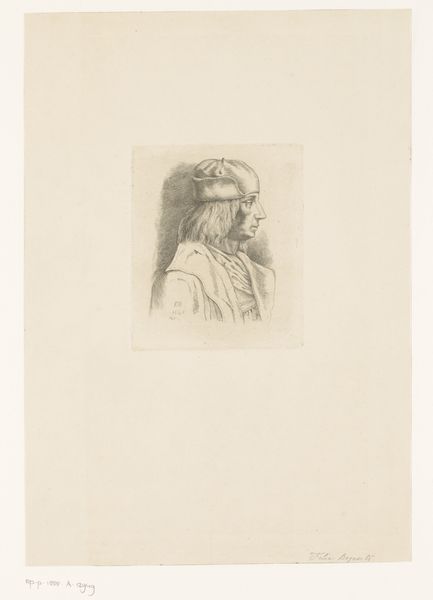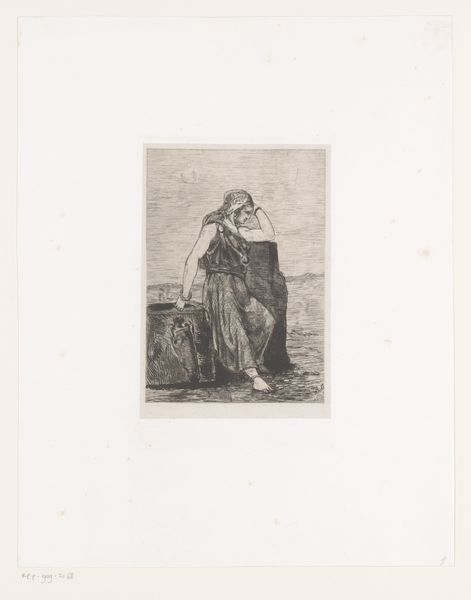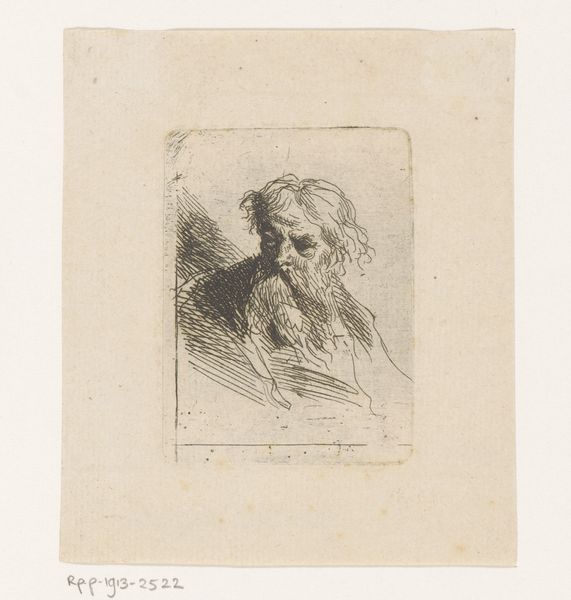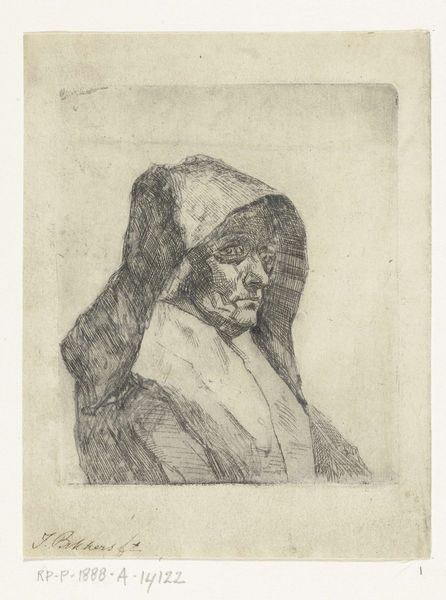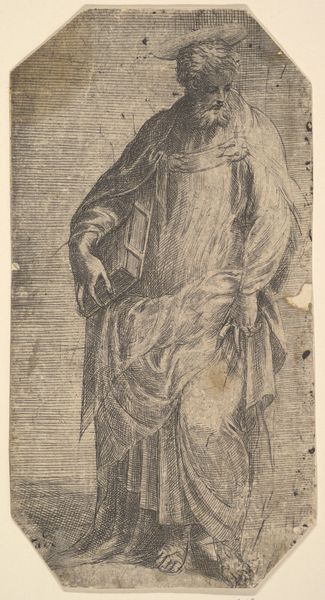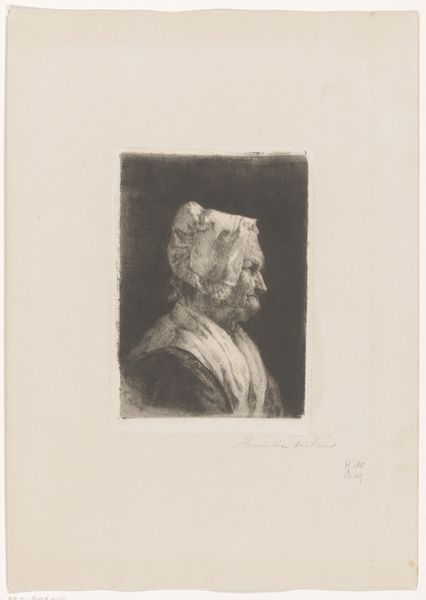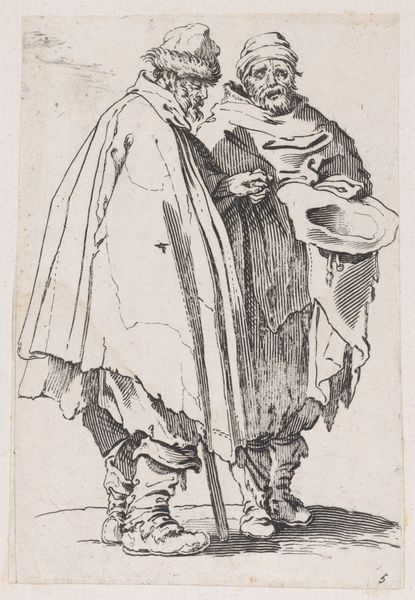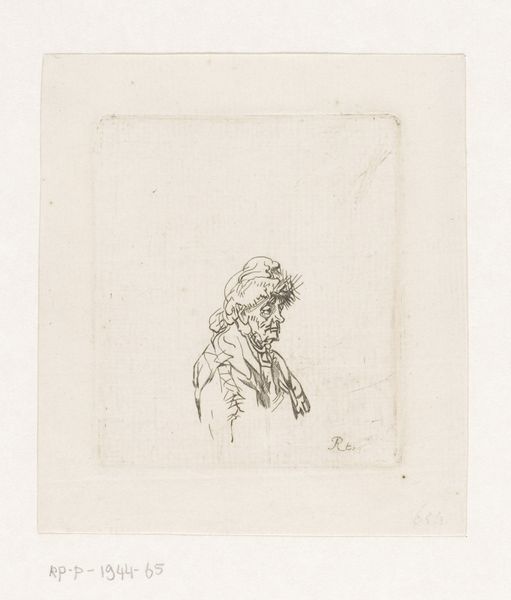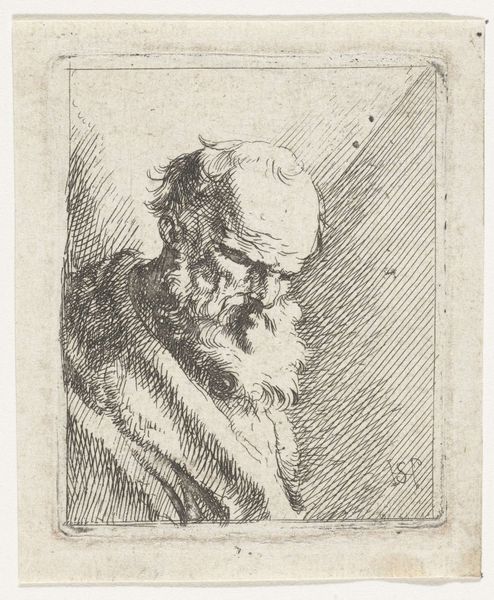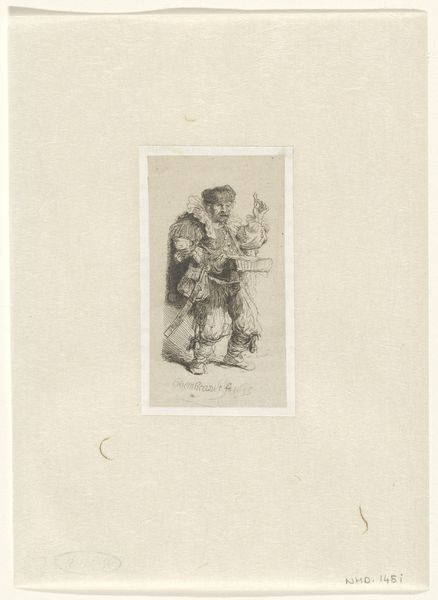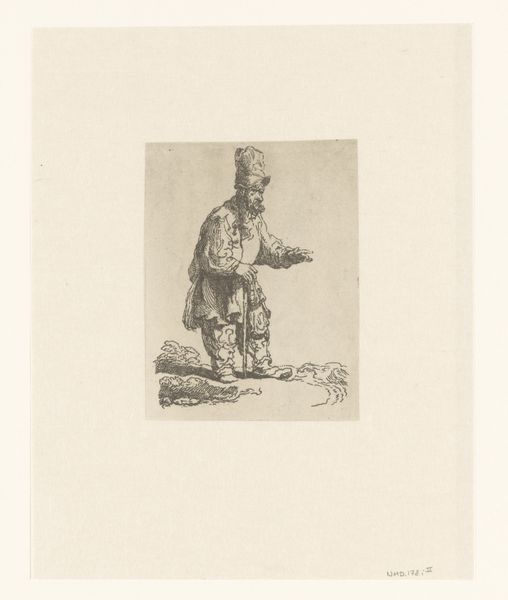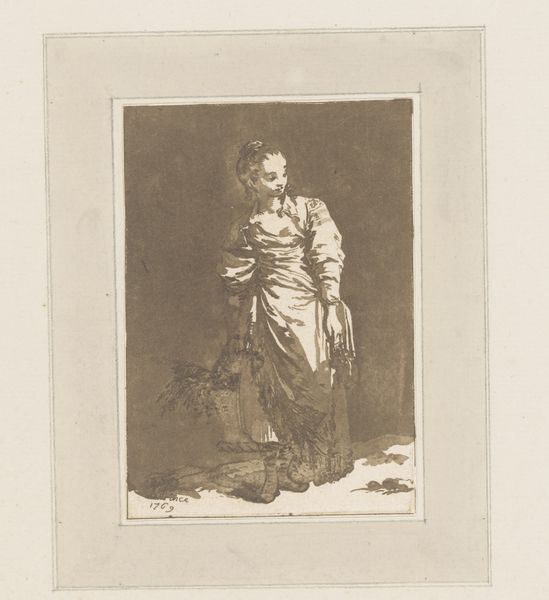
drawing, print, etching, engraving
#
portrait
#
drawing
#
toned paper
# print
#
etching
#
old engraving style
#
figuration
#
pencil drawing
#
orientalism
#
academic-art
#
engraving
#
realism
Dimensions: height 198 mm, width 150 mm
Copyright: Rijks Museum: Open Domain
Editor: This is "Oosters geklede man gewapend met sabel en dolken," or "Eastern dressed man armed with sabre and daggers" by Joseph Emanuel Van den Bussche, created in 1877. It's an etching, and the detail achieved with simple lines is amazing. How do you see the construction of the man's character based on his portrait's composition? Curator: Note the linear precision and controlled hatching that define the planes of the figure's face. It’s almost topographical. The clothing, richly adorned and intricately patterned, acts as a field of contrast, highlighting the comparatively less detailed rendering of the hands and the surrounding space. This creates a visual hierarchy. Have you observed how the artist directs your gaze through strategic variation in line weight and density? Editor: It seems you’re highlighting how the drawing techniques emphasize specific elements. The artist uses line variation and density to draw attention to some regions. It works. But what's the overall effect? Curator: The lack of deep tonal range keeps our attention on the surface and the technique used, rather than creating any atmospheric depth. The overall composition, rather than representing depth or real space, appears as a design. This emphasis on surface treatment and controlled representation, while technically proficient, results in a flattening effect that speaks to the values inherent in academic art of this period. Notice the evenness across the work overall; nothing really pulls the eye. Does this affect how we read the figure's power? Editor: Yes, the flattening makes him look more decorative than imposing. Curator: Precisely! It reframes the subject's presence as a spectacle of adornment rather than a forceful assertion of power. It has less to do with presence than it does with image. Editor: I hadn’t thought about it that way before. Now I'm seeing so much more, just by thinking about how the drawing creates its image. Curator: By dissecting the construction and inherent properties of the work, we unlock insights that a purely subjective encounter might obscure. This is what close looking empowers us to do.
Comments
No comments
Be the first to comment and join the conversation on the ultimate creative platform.

